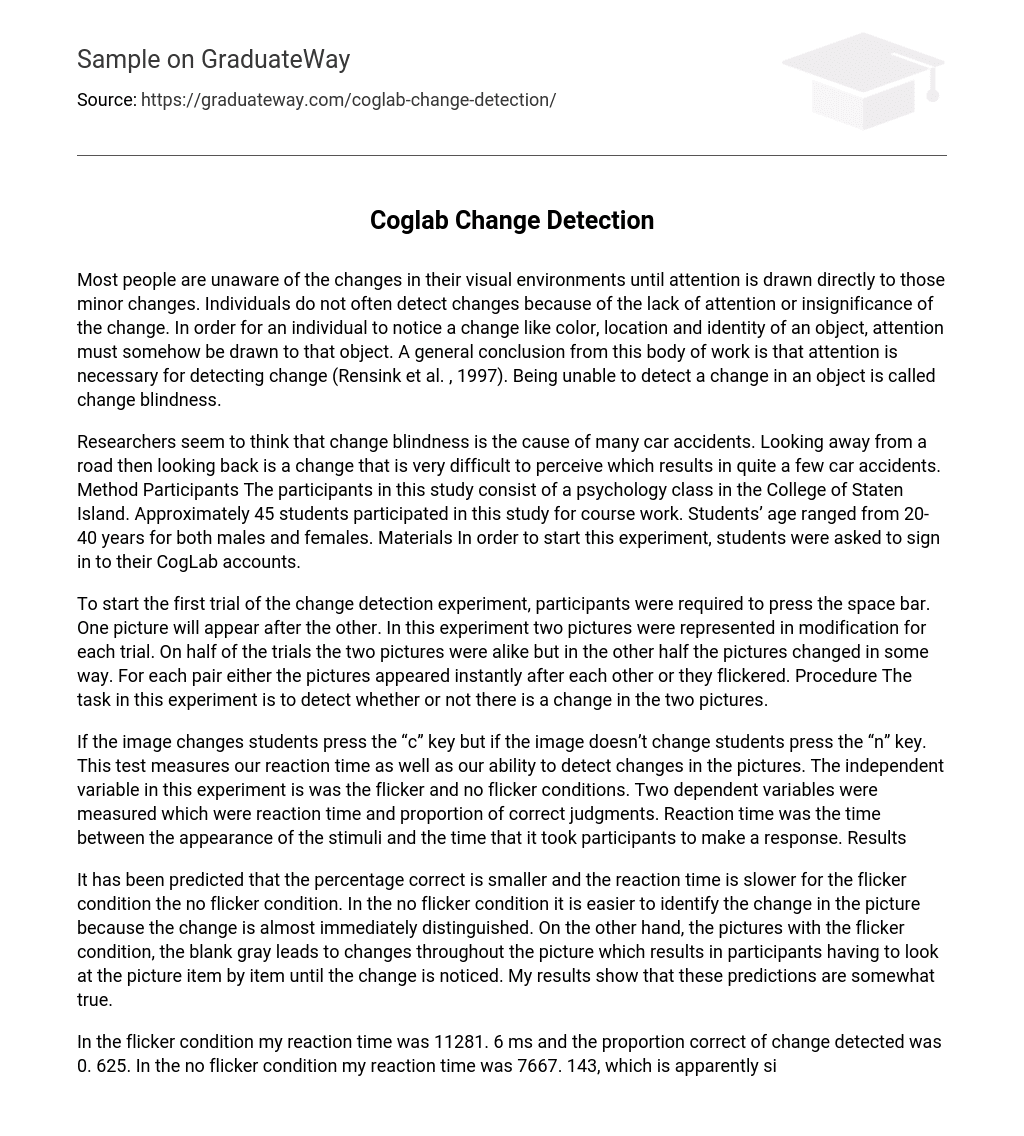Often, individuals are unaware of small changes in their visual surroundings unless they specifically focus on them. These changes go unnoticed due to a lack of attention or because they are seen as unimportant. To detect a change in an object’s color, location, or identity, one must consciously direct their attention towards it. Research by Rensink et al. (1997) shows that attention is crucial for detecting these changes. This phenomenon, known as change blindness, refers to the inability to perceive a change in an object.
Researchers have found that change blindness is a significant contributor to numerous car accidents. Drivers often struggle to detect any alterations when their attention momentarily diverts from the road and then refocuses. The study participants were psychology students from the College of Staten Island, comprising approximately 45 individuals with varying ages (ranging from 20 to 40 years) and genders. To initiate the experiment, these students had to sign in to their CogLab accounts.
Before starting the change detection experiment, participants were given instructions to press the space bar. The experiment consisted of showing two pictures in a specific order or by using a flickering effect. One of the pictures was modified while the other remained identical. The main goal was to determine whether there was any change between the two pictures.
The test assesses students’ reaction time and ability to detect changes in pictures. They are instructed to press the “c” key if there is a change and the “n” key if there isn’t. The experiment’s independent variable is whether or not flicker is present, while the dependent variables measured are reaction time and proportion of correct judgments. Reaction time measures the duration it takes for participants to respond after viewing the stimuli.
The flicker condition is expected to result in a lower percentage of correct identifications and slower reaction times compared to the no flicker condition. In the no flicker condition, the change in the picture is quickly distinguished, making it easier to identify. However, in pictures with the flicker condition, the continuous changes caused by the blank gray area require participants to examine each item in the picture until the change is noticed. My findings partially support these predictions.
In the flicker condition, my reaction time was 11281.6 ms and I detected changes at a proportion of 0.625. Conversely, in the no flicker condition, my reaction time was significantly longer than predicted at 7667.143 ms. However, my proportion of correct responses was slightly higher at 0.875.
The discussion centers around the main concept of the experiment: that individuals have limited capacity to remember scene details. Attention plays a crucial role in this aspect. To successfully detect a change in an object, it is necessary to specifically focus on that object; otherwise, any changes will go unnoticed.
The brain’s failure to perceive an unremembered element is a significant limitation. It is crucial for identifying modifications in objects, scenes, or images. My experiment’s findings indicate a close association between divided attention and change detection.
References
Rensink, R. A., O’Regan, J. K., & Clark, J. J. (1997). To see or not to see: The need for attention to perceive changes in scenes. Psychological Science, 8, 368–373.
Goldstein, E. (2008). Cognitive Psychology: Connecting Mind, Research, and Everyday Experience. (2nd ed). Thomson Wadsworth. 91-96





